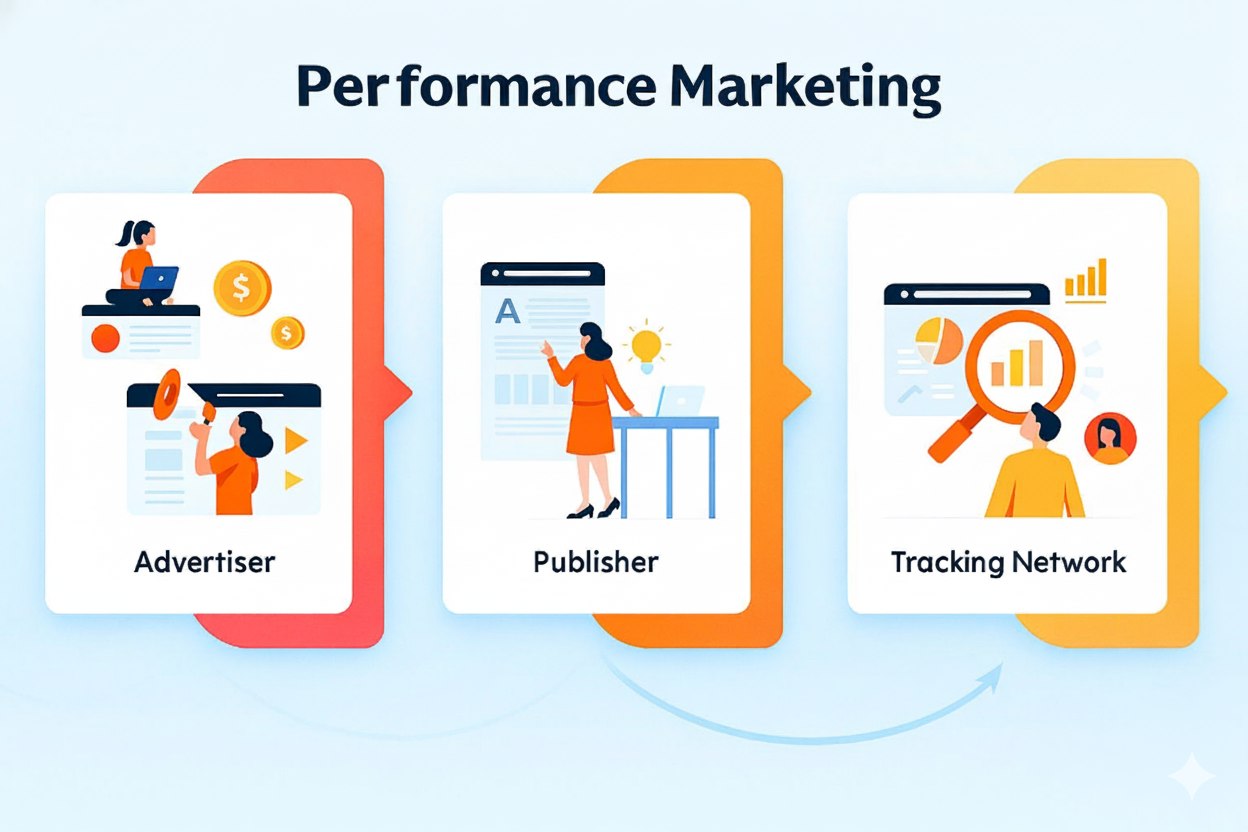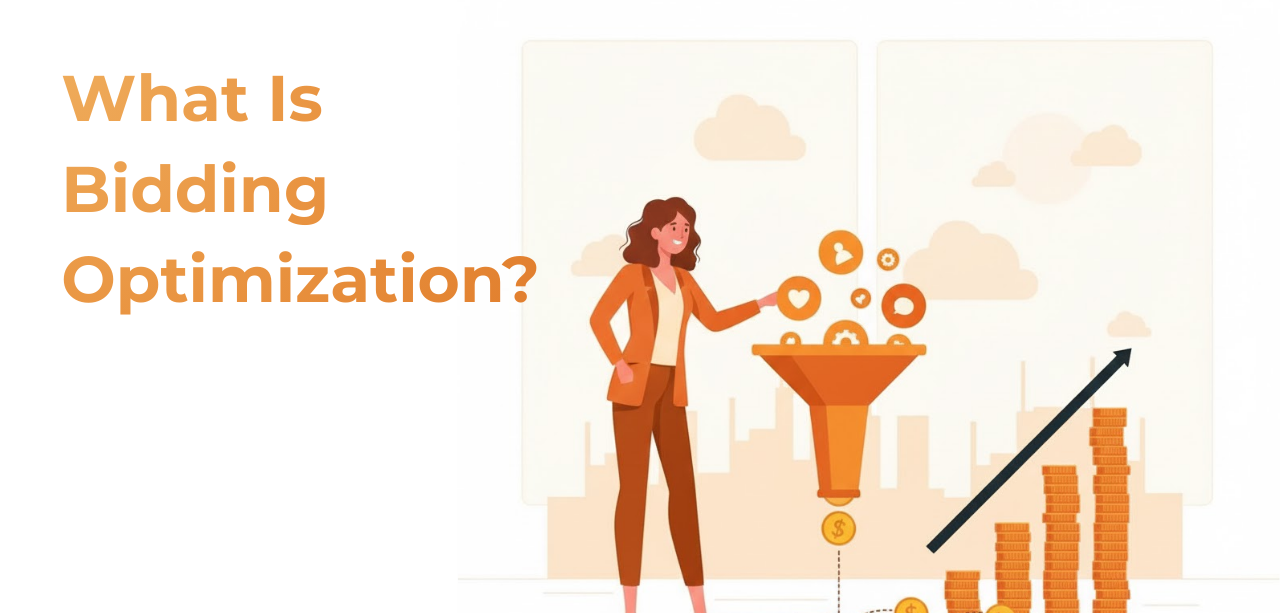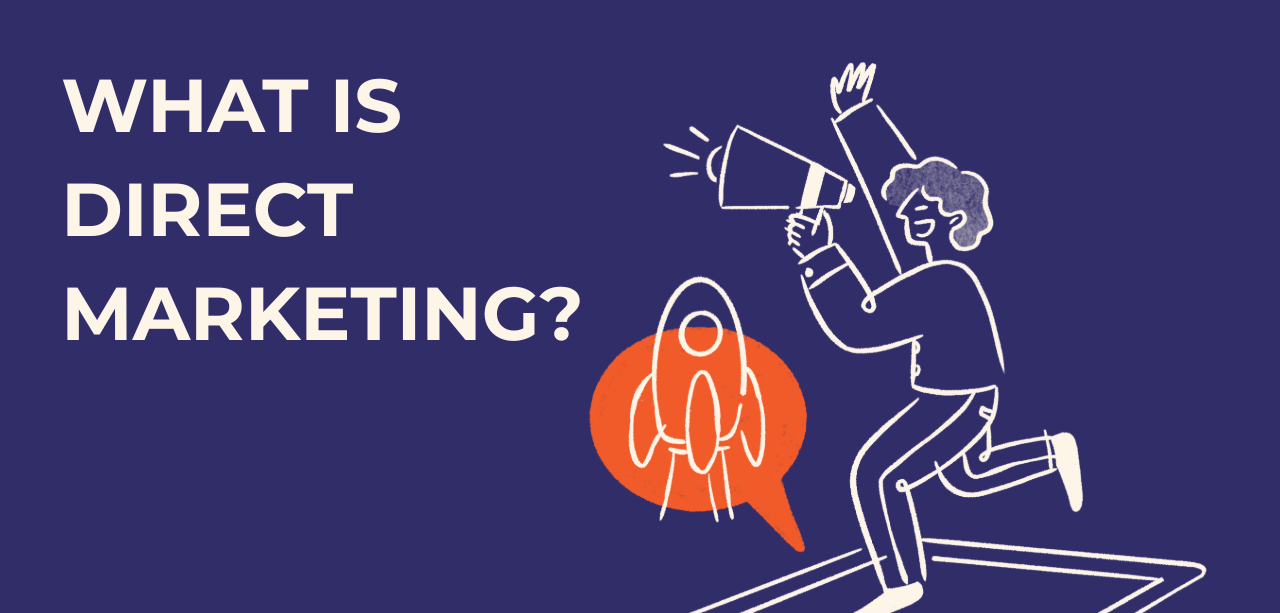What is Performance Marketing? A Simple Guide That Actually Makes Sense

Have you ever wished you could pay only for marketing that actually delivers results? That’s what performance marketing is all about. Unlike traditional advertising models that charge based on impressions or reach, performance marketing is a strategic approach where payment is directly tied to specific, measurable actions.
Performance marketing definition goes beyond typical marketing strategies, as it focuses entirely on tangible outcomes. In fact, this approach is often called performance-based marketing because advertisers only pay when desired results—such as clicks, leads, acquisitions, or sales—are achieved. We’ve seen marketing performance shift dramatically in this direction, with IBM research showing that two-thirds of senior marketers expected 20 percent of ad revenue to move away from impression-based sales toward action-based models.
In this guide, we’ll break down performance marketing into simple, understandable concepts. We’ll explore how it works across multiple channels, including search engines, social media, and affiliate marketing, and why it’s becoming an essential strategy for businesses focused on maximizing their return on investment.
What is performance marketing?
Performance marketing represents a fundamental shift in how businesses approach advertising. At its core, it’s a strategic method where advertisers pay marketing partners only when specific, measurable actions occur—not before. These actions might be clicks, leads, sales, app installations, or other concrete results that directly contribute to business goals.
Definition and core concept
Performance marketing is fundamentally results-driven. Instead of the traditional approach where you pay upfront and hope for the best, performance marketing flips the script—you pay after desired outcomes happen. This approach creates a win-win scenario for both advertisers and marketing partners, as payment is directly tied to success.
The model works on a simple principle: no results, no pay. This accountability ensures that every dollar spent contributes directly to tangible business outcomes. Performance marketers track specific metrics corresponding to different stages of the customer journey:
- Cost Per Click (CPC): Payment for each ad click
- Cost Per Lead (CPL): Payment for qualified leads or sign-ups
- Cost Per Acquisition (CPA): Payment for completed sales or conversions
- Cost Per Install (CPI): Payment for mobile app installations
How it differs from traditional marketing
The contrast between performance marketing and traditional advertising couldn’t be more stark. While traditional marketing typically charges based on impressions, reach, or time spent, performance marketing focuses exclusively on concrete actions and outcomes.
Traditional marketing methods like TV commercials or billboards offer limited measurement capabilities—you might know roughly how many people saw your ad, but not how they responded. Furthermore, once a traditional ad is published, making changes becomes difficult and expensive.
On the contrary, performance marketing provides precise data on exactly who interacted with your campaign and how. This approach offers several advantages:
- Real-time analytics that allow for immediate optimization
- Flexible budgeting that can be adjusted based on results
- Precise audience targeting rather than broad demographics
- Complete campaign control with the ability to pause or edit anytime
Why is it called ‘performance-based marketing’
The name “performance-based marketing” perfectly captures its essence—payment is based purely on performance. This model significantly reduces risk for advertisers since they only pay after achieving their desired objectives.
Performance marketing has earned this name through its unwavering focus on measurable results rather than potential reach. Every aspect of a performance marketing campaign is designed to be accountable, trackable, and optimized for maximum return on investment.
Additionally, this approach enables continuous improvement. Since performance is measured in real-time, marketers can quickly identify what’s working and what isn’t. Campaigns evolve based on actual data rather than assumptions—underperforming elements are paused while successful components receive additional investment.
The shift toward performance-based models reflects a broader change in how businesses approach marketing. Rather than viewing marketing as a cost center with uncertain returns, performance marketing transforms it into a strategic investment with clear, measurable outcomes that directly contribute to business growth.
How performance marketing compares to other models
Understanding the distinctive characteristics of performance marketing becomes clearer when we compare it to other marketing models. These comparisons highlight why many businesses are shifting their strategies toward more measurable approaches.
Performance marketing vs. brand marketing
Performance marketing and brand marketing serve fundamentally different purposes despite both aiming to drive business growth. Performance marketing focuses on generating immediate, measurable actions like clicks, leads, and sales. Conversely, brand marketing builds long-term awareness, perception, and loyalty.
The primary difference lies in their objectives and timeframes. Performance marketing drives specific, trackable actions with a short-term focus, whereas brand marketing aims to establish lasting relationships and recognition over time. These approaches measure success differently—performance marketing tracks ROI, clicks, conversions, and sales, while brand marketing examines brand awareness, audience sentiment, and reach.
Budget allocation between these models depends on your business goals. Small businesses often start with a 70/30 split, allocating 70% to the marketing type that best suits their business model. Nevertheless, some businesses adopt a more balanced 50/50 approach, especially when they need both established brand awareness and consistent lead generation.
Performance marketing vs. affiliate marketing
Many people mistakenly use these terms interchangeably, but there’s an important distinction: affiliate marketing is actually a subset of performance marketing. While they share the pay-for-results principle, performance marketing encompasses a broader range of channels and strategies.
The differences become clear when examining their scope:
- Channel focus: Affiliate marketing works primarily with publishers and content creators, while performance marketing covers multiple channels, including PPC, display ads, social media, and more
- Payment structure: Affiliate marketing typically operates on a cost-per-action (CPA) basis, usually for sales. Performance marketing offers flexible payment models (CPC, CPM, CPA, ROAS) depending on your objectives.
- Strategic control: In affiliate marketing, creative control primarily rests with affiliates, whereas performance marketing allows more control over messaging, targeting, and campaign execution
Performance marketing vs. general advertising
Traditional advertising has historically focused on impressions and reach rather than measurable outcomes. The Performance Marketing Association defines performance marketing as “paying for results from marketing campaigns—like sales, leads, or clicks”. This solves what’s known as the “Wanamaker problem”—the century-old advertising dilemma where retailers couldn’t determine which half of their advertising budget was wasted.
The fundamental distinction lies in accountability. Traditional advertising campaigns center around visibility and brand familiarity at scale. They typically follow rigid models where campaigns are developed months in advance and run on fixed timelines with limited adjustments.
Performance marketing operates with continuous optimization—campaigns are reviewed frequently, with creative, targeting, and spending updated based on real-time data. This model rewards speed, agility, and intelligence, delivering both quick wins and sustainable growth.
Notably, budgeting approaches differ substantially. Traditional marketing often uses backward-looking budgeting based on the previous year’s spending. Meanwhile, performance marketing treats budget as a function of performance—initial investments are measured rigorously, with additional funds allocated to successful campaigns and reduced for underperforming ones.
This flexibility makes performance marketing especially valuable for businesses seeking measurable growth in today’s data-driven marketplace.
Key performance marketing channels
Successful performance marketing relies on selecting the right channels to drive measurable results. Let’s explore the primary channels that make performance marketing strategies effective.
Affiliate marketing
Affiliate marketing serves as a foundational element of performance marketing, where external partners (affiliates) promote products in exchange for commission on sales or actions. This channel operates on a straightforward principle: the affiliate earns revenue only when their promotional efforts succeed. What makes affiliate marketing particularly powerful is its risk-mitigation structure—brands pay commissions exclusively for verified results, typically tracked through unique affiliate links.
Through this approach, businesses can expand their reach without upfront costs, making it ideal for both small businesses and enterprise organizations. The payment models typically include cost per conversion or cost per like.
Search engine marketing (SEM)
SEM involves paid advertisements that appear at the top or bottom of search engine results pages, targeting users actively searching for relevant products or services. Unlike SEO, which focuses on organic visibility, SEM uses a pay-per-click model where advertisers pay only when users click on their ads.
SEM helps brands increase awareness by positioning them prominently in search results, consequently driving consideration and trust. For performance marketers, SEM offers several advantages:
- Higher click-through rates compared to passive marketing forms
- Easy campaign customization focusing on specific keywords
- Ability to tailor campaigns to reach relevant audiences
Social media advertising
Social media platforms provide rich targeting capabilities based on demographics, interests, and behaviors, making them highly effective for performance marketing. These platforms offer extensive user data, enabling marketers to create highly refined audience segments and deliver relevant ads to those most likely to convert.
Performance marketers can leverage various ad formats across platforms like Facebook, Instagram, Twitter, LinkedIn, Pinterest, TikTok, and YouTube. The real-time analytics available on these platforms allow continuous optimization through A/B testing different ad elements to identify what resonates best with the audience.
Native advertising
Native advertising blends seamlessly with the environment it appears in, matching the look, form, and feel of the platform’s content. Unlike traditional display ads, native ads don’t disrupt the user experience, which contributes to their higher engagement rates—generating up to 8.8 times more click-throughs than traditional banner ads.
For performance marketers, native ads offer exceptional value through:
- Seamless integration into content experiences
- Non-intrusive user engagement
- Improved relevance to user interests
Common native ad formats include sponsored articles, in-feed ads, content recommendation widgets, and promoted listings.
Connected TV (CTV)
CTV advertising delivers ads via internet-connected television devices such as smart TVs, streaming media players, and gaming consoles. This channel combines the impact of traditional TV with the precision targeting and measurement capabilities of digital advertising.
Marketers can leverage CTV’s sophisticated targeting to reach specific demographic and audience segments based on viewing patterns and interests. With streaming representing 43.8% of overall TV time in the U.S. as of March 2025, CTV offers advertisers substantial audience reach.
Retail media and shoppable content
Retail media networks allow brands to utilize retailers’ first-party shopper data for highly targeted advertising. This approach ties ad exposure directly to the point of purchase, creating a measurable path to conversion.
Shoppable content represents the convergence of content and commerce, embedding e-commerce functionality directly within video content and social media platforms. This creates a frictionless path to purchase, allowing users to discover and buy products without leaving the content they’re consuming. By eliminating steps in the conversion funnel, shoppable content significantly increases impulse purchases and drives higher conversion rates.
How to measure marketing performance effectively
Measuring success in performance marketing requires understanding metrics at each stage of the customer journey. The right measurement approach transforms raw data into actionable insights, ultimately driving smarter spending decisions.
Top-of-funnel metrics: CPM, CPC
At the awareness stage, marketers focus on reaching potential customers efficiently. Cost Per Mille (CPM) measures the amount paid for every 1,000 ad impressions served. For brand awareness campaigns, achieving a low CPM among your target audience is often the primary goal.
Cost Per Click (CPC) tracks what you pay each time a user clicks your ad. This metric serves dual purposes as both a pricing model and a performance indicator. A low CPC suggests your ad effectively generates clicks, while a high CPC indicates you’re paying more for each interaction. These metrics help marketers understand initial campaign visibility before conversion occurs.
Bottom-of-funnel metrics: CPL, CPA
As prospects move deeper into the funnel, Cost Per Lead (CPL) becomes crucial. CPL measures how much you spend to generate each qualified lead through form submissions, demo requests, or sign-ups. This metric is particularly valuable for B2B enterprises and high-ticket B2C services with longer sales cycles.
Cost Per Acquisition (CPA), sometimes called Cost Per Action, represents what you pay to acquire a new customer who completes a purchase or desired action. According to WordStream’s 2025 Facebook Ads benchmarks, the average CPA sits near USD 19.68. As a primary bottom-funnel metric, CPA directly links marketing spend to revenue generation.
Strategic metrics: ROAS, LTV
Return on Ad Spend (ROAS) calculates the revenue generated for every dollar spent on advertising. It’s typically expressed as a ratio (e.g., 5:1) or percentage (500%). Modern performance marketers relentlessly optimize campaigns to meet or exceed target ROAS.
Customer Lifetime Value (LTV) predicts the total net profit expected from a customer throughout their relationship with your business. The ideal LTV to CAC ratio is 3:1, meaning each customer provides three times the value of their acquisition cost. This forward-looking metric helps marketers make strategic decisions about acquisition spending.
Choosing the right KPIs for your goals
Successful marketers routinely capture key performance indicators to assess marketing performance within their allocated budget. Instead of overwhelming yourself with endless metrics, focus on two categories: strategic KPIs (your ultimate goals) and tactical KPIs (predictors of strategic success).
Above all, align metrics with your strategy and business objectives. For example, if you’re an e-commerce business, focus on ROI, average order value, and revenue. SaaS companies typically prioritize monthly recurring revenue and customer lifetime value.
Emerging trends in performance marketing
The performance marketing landscape is rapidly evolving with technological advancements shaping how brands connect with consumers. These emerging trends are redefining what’s possible in the quest for measurable marketing results.
AI and automation in campaign management
AI is transforming campaign execution from an optional enhancement to a core necessity. Currently, 54% of marketers use AI in their role, a significant jump from 37% just a year ago. This technology optimizes advertisements by analyzing vast datasets and adjusting elements in real-time. One marketer reported a remarkable 32% increase in ROAS when using AI-powered Performance Max campaigns compared to manual management.
Tools like Adobe GenStudio now leverage generative AI to empower marketing teams to create high-quality campaign content, personalize messaging for target personas, and optimize assets based on performance data.
Omnichannel strategies and unified measurement
Unified marketing measurement (UMM) has emerged as a response to increasingly complex customer journeys. Essentially, UMM combines different methodologies like Marketing Mix Modeling and Multi-Touch Attribution into a comprehensive framework. This approach provides two critical benefits:
- Integration of online and offline campaign insights
- Revelation of how upper-funnel activities impact lower-funnel performance
Moreover, UMM helps marketers overcome challenges from restricted user-level data through walled gardens and privacy regulations.
Privacy-first personalization
A fascinating paradox exists in today’s market: 81% of customers prefer personalized experiences, yet 81% believe the risks of data collection outweigh the benefits. Successful brands are resolving this tension through:
- Data minimization (collecting only necessary information)
- Transparency about data usage
- First-party data utilization as third-party cookies disappear
The rise of social commerce
Social platforms have evolved beyond discovery to become complete shopping environments. Research shows 72% of consumers are now willing to buy directly within social media platforms. This shift has generated substantial results—social-first brands achieved an average revenue increase of 10.2% from their social strategies. By 2030, the social commerce market is projected to reach between USD 5.32 billion and USD 8.50 trillion.
Conclusion
Performance marketing stands as a game-changer for businesses seeking measurable results from their marketing efforts. Throughout this guide, we’ve seen how this approach fundamentally differs from traditional advertising models by tying payment directly to specific actions rather than mere impressions. This accountability creates a win-win scenario where marketers pay only for actual results.
Companies shifting toward performance marketing gain several advantages, including real-time analytics, flexible budgeting, and precise audience targeting. Additionally, the ability to track specific metrics at different stages of the customer journey provides unprecedented insight into campaign effectiveness.
Choosing the right channels proves crucial for success. Affiliate marketing, search engine marketing, social media advertising, native ads, connected TV, and retail media each offer unique benefits depending on your business objectives. Therefore, selecting metrics aligned with your goals—whether CPM, CPC, CPL, CPA, ROAS, or LTV—ensures you’re measuring what truly matters.
The future of performance marketing looks promising. AI and automation continue transforming campaign management, while omnichannel strategies provide unified measurement across touchpoints. Meanwhile, privacy-first personalization addresses growing consumer concerns without sacrificing the personalized experiences customers expect.
Performance marketing ultimately solves the age-old advertising dilemma—knowing exactly which half of your marketing budget generates results. This approach transforms marketing from a cost center with uncertain returns into a strategic investment with clear, measurable outcomes that directly contribute to business growth. Whether you’re a small business or enterprise organization, performance marketing offers a data-driven pathway to maximize your return on investment while minimizing risk.
READ ALSO:- What is Account-Based Marketing (ABM)?
FAQs
Q1. What exactly is performance marketing?
Performance marketing is a results-driven approach where advertisers pay only when specific, measurable actions occur, such as clicks, leads, or sales. It focuses on tangible outcomes rather than just impressions or reach.
Q2. How does performance marketing differ from traditional marketing?
Unlike traditional marketing that charges based on impressions or time, performance marketing ties payment directly to concrete results. It offers real-time analytics, flexible budgeting, and precise audience targeting, allowing for immediate optimization.
Q3. What are the key channels used in performance marketing?
Key performance marketing channels include affiliate marketing, search engine marketing (SEM), social media advertising, native advertising, connected TV (CTV), and retail media. Each channel offers unique benefits for reaching and engaging target audiences.
Q4. How do you measure the success of performance marketing campaigns?
Success is measured using metrics at different funnel stages, such as Cost Per Mille (CPM) and Cost Per Click (CPC) for awareness, Cost Per Lead (CPL) and Cost Per Acquisition (CPA) for conversions, and Return on Ad Spend (ROAS) and Customer Lifetime Value (LTV) for overall performance.
Q5. What are some emerging trends in performance marketing?
Emerging trends include AI and automation in campaign management, omnichannel strategies with unified measurement, privacy-first personalization, and the rise of social commerce. These trends are reshaping how brands connect with consumers and optimize their marketing efforts.
Related Articles
Continue your learning journey with these related insights

What is Ad Inventory?
The digital advertising landscape operates on a fundamental commodity: space. While physical stores stock products on shelves, digital publishers stock something equally valuable—advertising inventory. Understanding this concept is essential for anyone involved in online marketing, whether you’re buying ad space or selling it. What is Ad Inventory? Ad inventory represents the total amount of advertising […]

What Is Bidding Optimization?
In the fast-paced world of digital advertising, every dollar counts. Whether you’re running search ads, display campaigns, or e-commerce promotions, the difference between profitability and wasted spend often comes down to one critical factor: bidding optimization. But what exactly is bidding optimization, and how can it transform your advertising performance? This comprehensive guide breaks down […]

What Is Direct Marketing?
Have you ever received a personalized email offering a discount on exactly what you were browsing yesterday? Or gotten a text message about a flash sale from your favorite store? That’s direct marketing in action—and it’s one of the most powerful tools businesses use to connect with customers today. Unlike traditional advertising that casts a […]
Ready to Transform Your Advertising Strategy?
Join thousands of advertisers who trust Performoo to optimize their campaigns and maximize revenue.